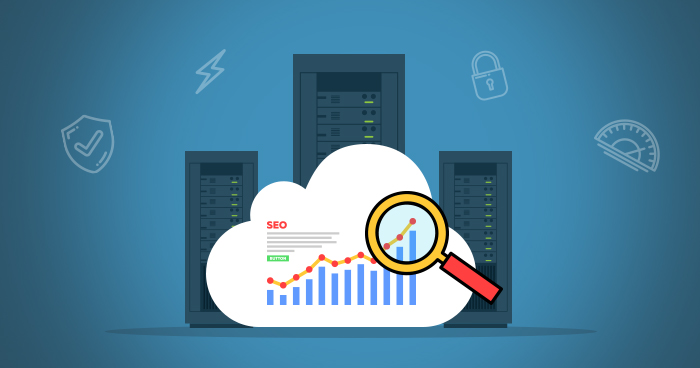How often to backup and where to store backups
- What is a backup and what are backups for?
- Differences between backups, archiving and data synchronization
- What needs to be reserved
- Types of data backup
- How often backups should be made
- Why backups are kept separate from the original data
- How long backups should be kept
- Which devices to back up on
- Importance of backup for an organization
Data is a valuable asset in the era we live in. They didn’t call it the information age for nothing. They could be important information for your business, personal files, or just data that you use every day. But what about if they suddenly disappear? What if your computer crashes, a virus infects your system, or you accidentally delete an important document?
This is where an uncloak-wearing hero named backup (backup) comes into play. Backups are a guarantee that your data will be safe and accessible at all times. That’s what we’re going to talk more about.
What is a backup and what are backups for?
Backup, or backup, is the process of creating a copy of data that can be restored if it is lost or corrupted. This can be caused by many situations including hardware failures, viruses, user errors, theft, etc.
Backups are necessary to keep your data safe. They ensure that important information is not lost forever and you can recover it if needed. Let’s look at the main reasons why you should do backups:
- Data Loss Protection. Even if you are very careful, there is always the possibility of losing data due to hardware failure, viruses and other reasons. Backups help keep these situations from happening.
- Recovering from an attack. Viruses and malware can corrupt files or encrypt them, demanding a ransom to restore them (many people probably remember those infamous winlockers). If you have a backup, you can restore your files.
- Archiving. Backups can also serve as an archive of old files for when they are needed again.
One of the most important reasons is peace of mind. After creating a website, buying a domain and hosting, you will have to take care of data retention on a regular basis. Knowing that you have a backup can give you peace of mind about their safety.
Differences between backups, archiving and data synchronization
Although backups, archiving, and data synchronization are related to copying and preserving information, they serve different purposes and are used in different contexts.
Backup is the process of creating a copy of data to avoid losing the original information. This copy can then be used to restore the original if it is damaged or lost. Backups are usually done regularly to keep data up to date.
Archiving is the process of preserving data for long-term storage. Unlike backups, which are updated regularly, archives retain a specific version of data and do not change. They are used to preserve historical information and are often subject to certain rules and policies, for example under data retention legislation.
Data synchronization is the process of updating data in two or more locations at the same time. This is typically used to ensure that data is up to date on all of the user’s devices. For example, if you change a file on your work computer, synchronization will update that file on all of your devices. However, it is important to note that synchronization is not a replacement for a backup, as any changes (including unwanted or malicious changes) will also be synchronized.
What needs to be reserved
Let’s take a look at the main types of data that need to be reserved:
- Personal files. These could be documents, photos, videos, music, and other files that you would hate to lose. Especially if you created them yourself and put a part of yourself into them.
- System files and applications. If your computer crashes or is infected with a virus, restoring system files and applications can be a daunting task. Backing up these files can help you restore them faster.
- Operating data. If you run a business, it’s important to back up all of your business data. This can include client databases, financial information, project documents, and more.
- Email. It is also important to keep copies of all your emails, especially if they contain important information.
In such a matter, you should be guided by the classic rule – it is better to back up than not to back up. If you’re not sure if you need to back up a particular file or data, the answer is probably yes.

Types of data backup
There are three basic types of data backup:
- Full Backup. This is the simplest and most comprehensive type of backup. All files and folders of the selected system or server are copied to the backup storage. It may take a lot of time and space, but data recovery is faster because all the data is stored in one place.
- Incremental Backup. With this type of backup, after the first full backup, only those files that have changed or been created since the last backup are backed up. This saves time and space, but recovery may take longer because you may need to merge information from multiple backups.
- Differential Backup. This type of backup is similar to an incremental backup, but in this case copies all files that have changed since the last full backup, rather than the last incremental backup. It may take up more storage space than incremental backups, but recovery is usually faster because only the first full backup and the last differential backup are required.
To choose the right type, focus on your data storage needs, time and resources available for data recovery.
How often backups should be made
The frequency of backups depends on how often your data changes and how critical it is to recover the most recent information in the event of data loss. Let’s consider three cases:
- Personal Information. If you rarely add or change files, a weekly or monthly backup may be sufficient. However, if you work with important documents on a daily basis, it is recommended that you make backups every day.
- Operating data. In most companies, data changes daily, and losing even a day’s work can cost a lot of time and money. In this case, it is recommended to make backups every day. Some organizations even do backups several times a day to minimize data loss.
- System Data. If you manage important systems or databases that are frequently updated, it is recommended that you take backups several times a day.
It’s also important to have a data recovery plan in place and regularly check your backups to make sure they are working properly.
Why backups are kept separate from the original data
This happens for several reasons:
- If your original data and backups are stored in the same location, both versions may be destroyed in the event of physical damage such as fire, flood, war, or other natural disaster.
- If a virus or malware gets into your system, it can corrupt all the data on that system. If the backups are stored separately, they will remain intact.
- Sometimes you can accidentally delete or modify files. If the backups are stored separately, you can always restore that data.
- If your equipment is stolen, backups stored elsewhere will remain intact.
Such precautions ensure that you will be able to recover your data in the event of a serious incident.
How long backups should be kept
Backup retention times vary depending on a number of factors, including the type of data, company policy, or legal requirements. For example:
- For personal data such as photos, documents, and other files, it is recommended that you keep backups for at least a year. However, it may depend on how important this data is to you (some old photos, for example, are best never lost, especially if they capture the best moments of your life).
- Many businesses keep data backups for 3-7 years to comply with various legal requirements and industry standards. Some types of data, such as tax records, may require longer retention.
- Some industries, such as healthcare and finance, have specific laws that require data to be stored for a certain amount of time. For example, HIPAA in the United States requires medical records to be retained for 6 years.
It all depends either on how important you yourself consider certain files to be, or how important the data is that your business depends on.
Which devices to back up on
There may be more than one such device:
- External hard disks or SSDs. They offer a large volume and ease of use. They also provide quick access to files by connecting directly to your computer (sometimes you need to use USB-HDD or USB-SSD adapters).
- Network Attached Storage (NAS). These are devices that connect to your home or office network interface and provide backup space for all devices on your network.
- Cloud storage. Services such as Google Drive, Dropbox and Amazon S3 offer remote data storage. This can be handy if you want to access your files from anywhere you have an internet connection. In this case, it is important to take care of cloud security to protect the data from attacks.
- Servers. Large organizations often use servers to back up data. This can be a local server in your office or a remote server in a data center.
- Flash drives. They don’t have much storage space either, but they can be useful for backing up small amounts of data or transferring files between devices.
- Optical disks (CD, DVD, Blu-ray). They can be useful for archiving data for the long term, but they have limited capacity and require specialized equipment to write and read data. Today, these carriers can be called obsolete, so they are used less and less frequently.
The ideal is to have multiple copies of the data and store them in different locations.
Importance of backup for an organization
Data backup is an essential element of a successful data management strategy in any organization. Let’s look at a few reasons why this is so important:
- Data Loss Protection. This is perhaps the most obvious reason. Data can be lost for a multitude of reasons, from hardware failures to virus attacks to accidental deletion. Backup provides a means of restoring data after such events.
- Ensuring business continuity. If systems fail, data can be quickly restored from a backup, minimizing downtime and loss of productivity.
- Compliance with legal requirements and industry standards. Many organizations are required by law or industry standards to retain data for a certain period of time.
- Defense against cyberattacks. Now the threat of cyberattacks has become a reality for all organizations. If data is encrypted or destroyed in an attack, backups may be the only way to restore it.
- Testing and Development. Data backups can be used to test new systems or processes, without the risk of damaging or losing actual data.
- Archiving. Backup gives organizations the ability to preserve historical data for future use or analysis.
- Protection of Reputation. Data loss can seriously damage an organization’s reputation and cause distrust among customers and partners.
- Financial Protection. Data loss can result in significant financial losses, including lost sales, regulatory fines, data recovery costs and loss of competitive advantage.
It’s also important to remember that a backup strategy should be part of a broader data management and information security plan. This should include properly storing and protecting backups, testing backups regularly to make sure all data is available.








